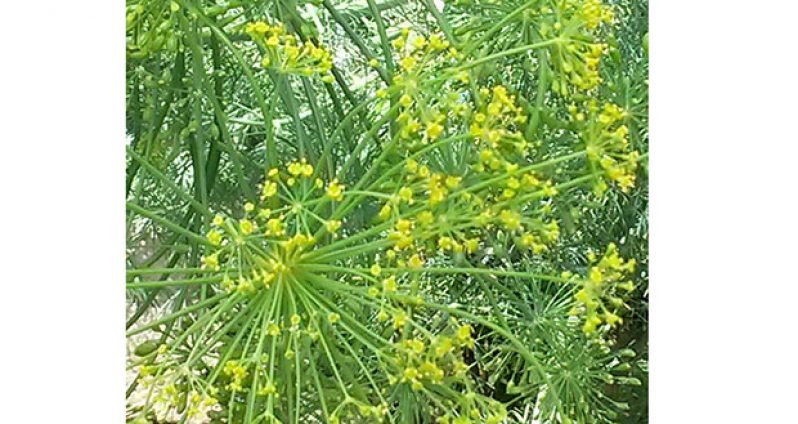If you don’t have this in your garden as yet then you should.
Dill-its scientific name anethum graveolens, is a most useful and easy to grow culinary herb that also serves medicinal purposes.
Dill is a member of the carrot family and is an erect, freely branching annual herb with finely dissected, lacy, blue-green foliage.
It is grown for its seeds and foliage.
For the conscientious cook, dill is the name of the herb that can make your cooking look and taste like a work of genius.
Dill is the principal flavouring in pickles and is also used to add zest to potato salads, egg salads and to flavour vinegars and sauces for fish.
Dill goes well with cabbage and other boiled vegetables. Often the seeds are used for these purposes, but the leaves serve equally well.
The dill leaves and seeds are a tasty flavouring for fish, lamb, new potatoes and peas.
Dill is a very popular flavouring in northern, central and eastern European countries almost indispensable in Russian and Scandinavian cookery.
In India, ‘Sowa’ dill, which is more pungent than European and American varieties, is an essential ingredient in curry.
Dill should however be used at the end of cooking, because cooking will destroy most of its flavour
Dill is mostly a culinary herb, but experts say that it does have some value in medicine, mostly as a stomach soother and anti-gas remedy.
It is also said to increase mother’s milk and help treat breast congestion from nursing. It is mild, and makes a good remedy for colic in babies.
In many parts of the world, the seed is also used to make dill water or tea which treats indigestion, flatulence, hiccups, stomach and menstrual cramps, insomnia, colds, flu and colic.
It is a constituent of gripe water and other children’s medicines because of its ability to ease flatulence and colic.
Dill is also said to an appetite stimulant among many other medicinal properties.
The dill plant grows about 3-5 ft (0.9-1.5 m) tall and sometimes gets top heavy and falls over.
It is a very attractive plant with wispy feathery leaves and all parts are strongly aromatic.
The flowers are yellow and borne in large, rounded, compound umbrella-like clusters in which all the flower stems originate from the same point on stiff, hollow stems
Dill can be grown in small space in the kitchen garden or in containers. It is tolerant of most climatic conditions and easy to germinate, so it causes few problems for novice gardeners.
Dill will grow well in most soils. Prepare the soil by digging to a spade and a half depth.
The long tap roots of dill need to be able to grow without hitting solid soil.
Incorporate some long lasting organic fertiliser such as compost, at the rate of two handfuls per square meter (yard).
The seedlings will emerge in two weeks or so, and should be thinned to 24cm (9in) apart.
Dill will produce wispy leaves growing on a single stem about 75cm (30in) high, which can be harvested about eight weeks after sowing.
The long tapered roots of dill will ensure that it is unlikely to need watering in all but the most extreme dry conditions.
The only care required is to keep the plants weed free
Seeds are available at seed plant nurseries and plant shops in and around Georgetown.
(By Clifford Stanley)




.png)









